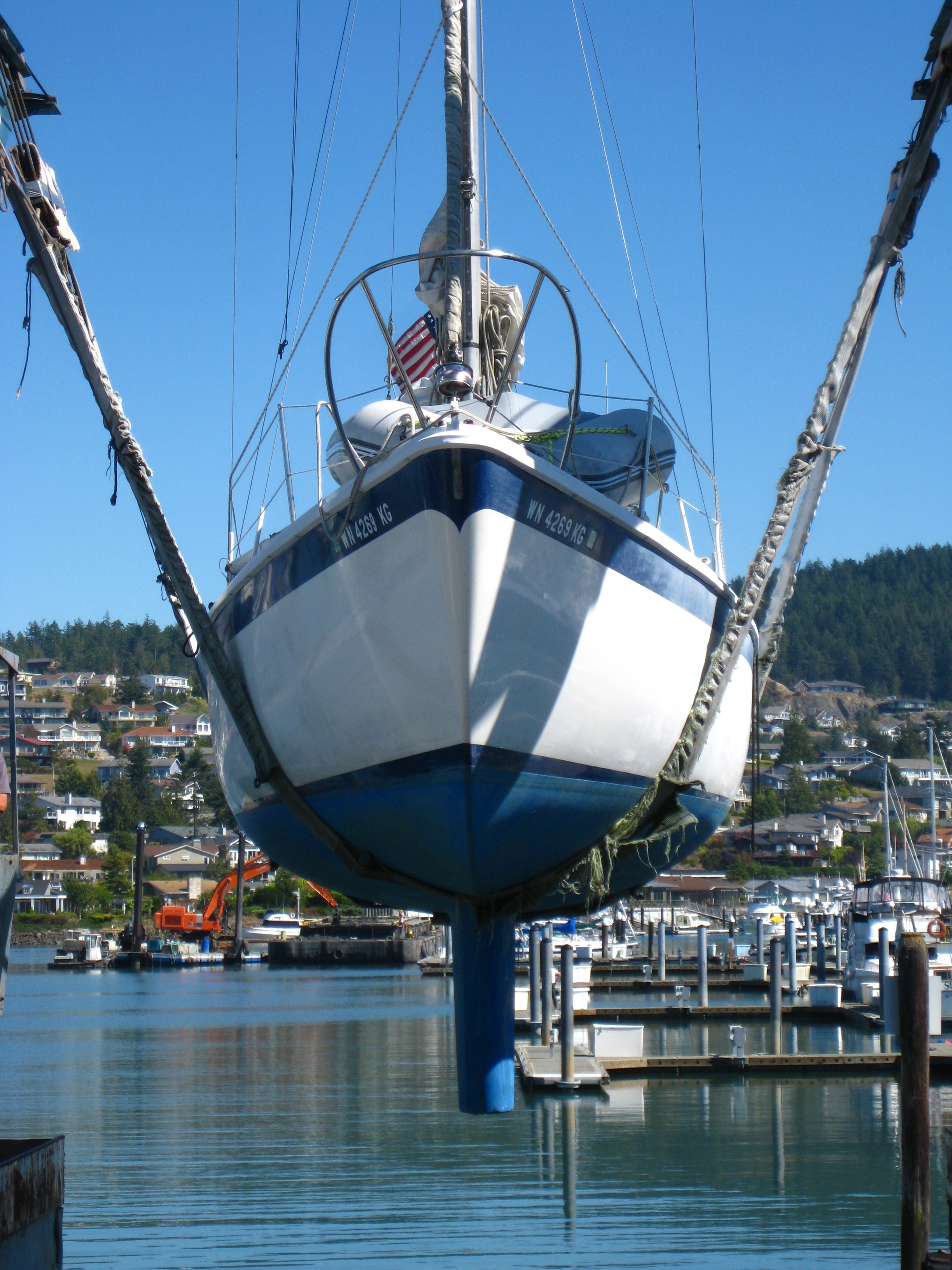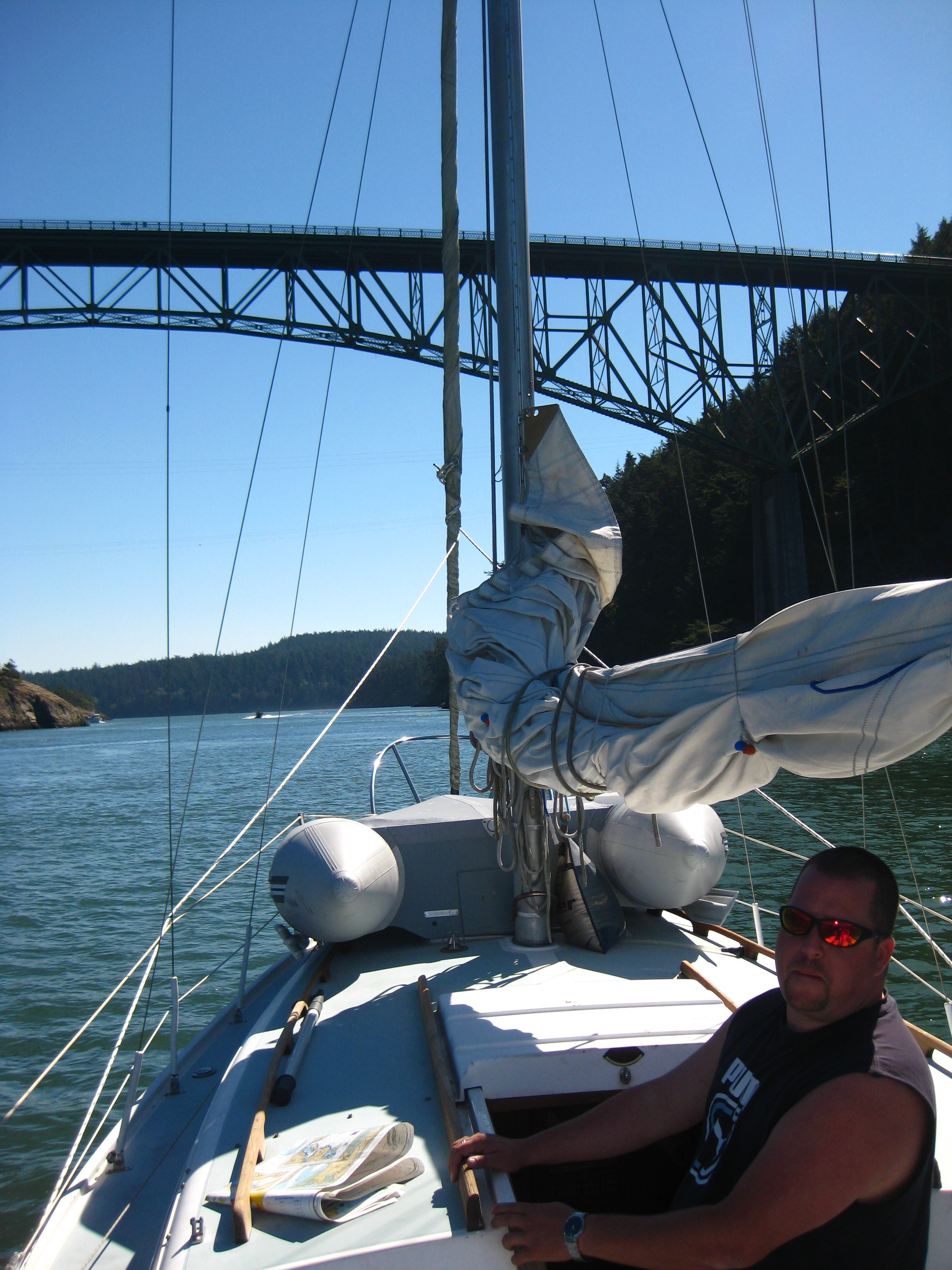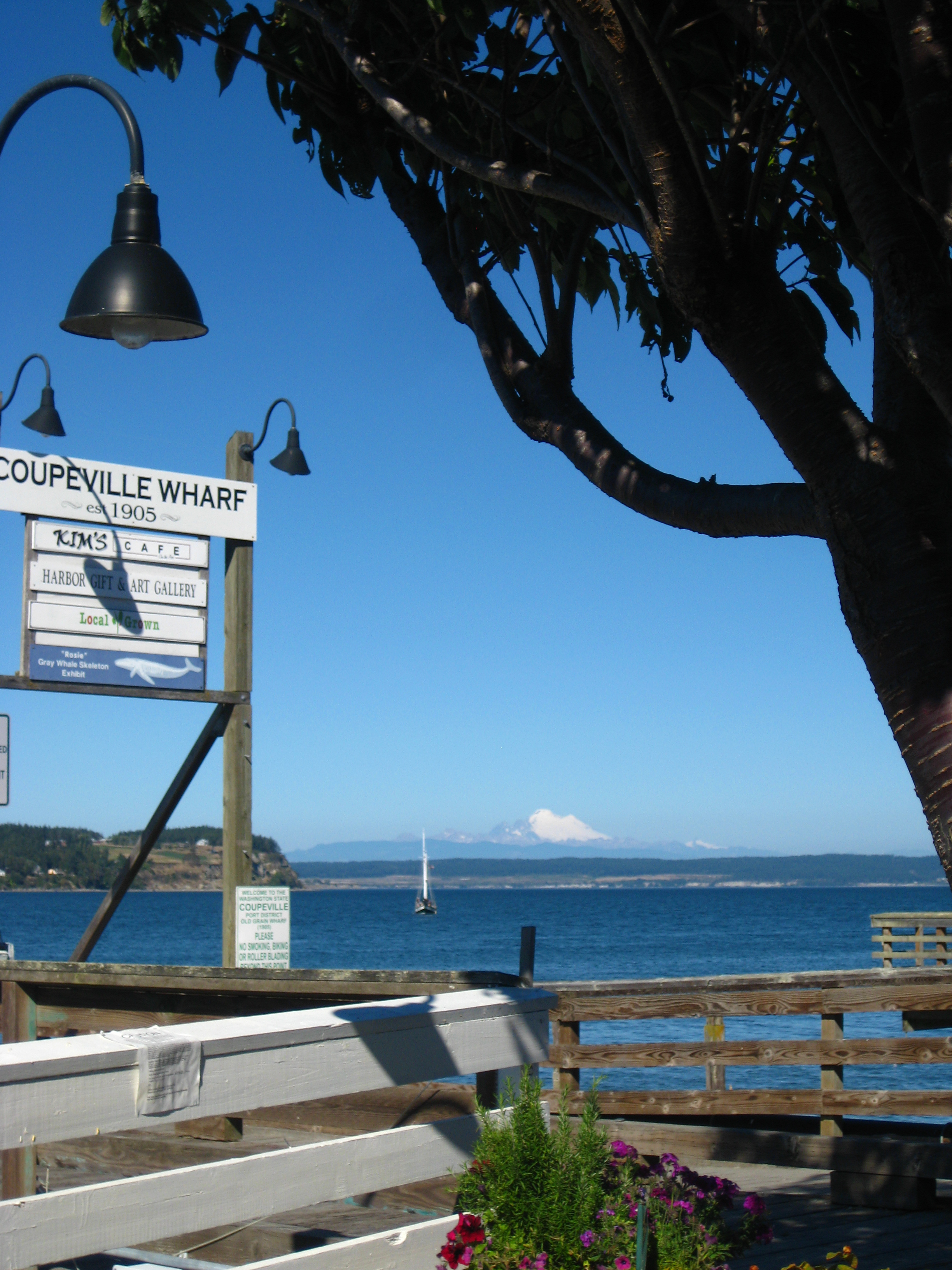Back in July I wrote about the week long sailing trip that ended after 1 day with engine failure and dramatic action. Since then our old sailboat has been stuck in Anacortes, WA while the local marine service company diagnosed and repaired the engine. My wife also delivered our first child during that time so we were a little busy anyway. They declared the engine good to go last week and I scheduled sea trials and pickup for Tuesday (8/24). We packed a cooler full of food, some clothes, sleeping bags and drove up to Anacortes to meet the boat. After a slightly expensive lunch at the marina restaurant, with masterful drinks poured by the same bartender we were served by the last time, we met the Travelift about to splash the boat.
The engine fired up just fine and sounds much better than it used to. It runs and idles smoother, doesn’t smoke, runs cooler, etc. So we headed out for sea trials in the bay and cruised around for about 45 minutes at different RPMs, heating and cooling the engine to stress it a little looking for any problems. The boat runs great! Under engine power we move about 1 knot faster than before too. I think the engine has been running poorly for quite a while before it failed. Anyway, satisfied that the boat engine was performing well, we headed back in to the dock. I paid the bill, we loaded out provisions and headed out with just enough time to make it to Deception Pass for slack tide.
In the immortal words of Captain Ron — “Well, the best way to find out is to get her out on the ocean Kitty, if anything’s gonna happen, its gonna happen out there.”
20 minutes out, a new sound develops from the engine compartment. It sounds like metal rattling–a very distinct, sharp sound. Down in the engine compartment it’s a very loud sound, an exhaust leak from somewhere. A couple phone calls and we turn back to Anacortes. We clearly aren’t making it to Deception Pass tonight. The engine is not quote right yet. Mechanic shows up and determines that the head gasket is leaking, might have been a defective gasket. But it’s solid copper and a new one is several days away. Another mechanic joins us at 8:30am the next morning and finds out that the head bolts loosened during the sea trial and subsequent motoring. He tightens then up and its running fine again. So out for another trial, then back to cool the engine and check the bolts again–still good!
So we finally leave Puget Sound’s own Bermuda Triangle for home. We pass through Deception right on time and continue south towards Coupeville on Whidbey Island. In another moment of calamity on our eternal 3-hour tour, we are moving along at over 6 knots when the boat suddenly stops dead in the water and pitches forward. Jason who was in the galley, flies forward into the head and falls down while dishes go flying. A quick check of the depth sounder (showing 2.8ft) confirms my fears.. we hit a sand bar. It turns out the navigator (me) was too preoccupied on his cell phone dealing with plans for the night and talking to the car dealer about the Mazda’s coolant leak, to notice that we were about 100 yards outside the marked channel. Reversing the engine does nothing to help and the current is pushing us against the sand bar pretty hard.
south towards Coupeville on Whidbey Island. In another moment of calamity on our eternal 3-hour tour, we are moving along at over 6 knots when the boat suddenly stops dead in the water and pitches forward. Jason who was in the galley, flies forward into the head and falls down while dishes go flying. A quick check of the depth sounder (showing 2.8ft) confirms my fears.. we hit a sand bar. It turns out the navigator (me) was too preoccupied on his cell phone dealing with plans for the night and talking to the car dealer about the Mazda’s coolant leak, to notice that we were about 100 yards outside the marked channel. Reversing the engine does nothing to help and the current is pushing us against the sand bar pretty hard.
If you read the previous post, you’ll remember that the dinghy saved the day when  the engine failed.. Well, another notch on the dinghy’s stern is due after I threw it off the bow, mounted the Yamaha motor, and used it as a mini tugboat to spin the sailboat around into the current to push off the sand bar. I’m contemplating renaming the sailboat and dinghy to “The Problem” and “The Solution” respectively.
the engine failed.. Well, another notch on the dinghy’s stern is due after I threw it off the bow, mounted the Yamaha motor, and used it as a mini tugboat to spin the sailboat around into the current to push off the sand bar. I’m contemplating renaming the sailboat and dinghy to “The Problem” and “The Solution” respectively.
We made it safely to Coupeville and had a wonderful afternoon and evening. My wife and baby drove over to meet us for dinner and the next morning we shoved off early for Everett. We got a little wet on this last run due to rain but made it home safe, locked the boat down, hopped in the car and went home. It’s a series of mini-adventures I will never forget.
On the plus side, our little old sailboat is now better equipped, I have a new found respect for the dinghy, and I got to go boating once more before summer ends, even if it did cost us a lot more money than we had planned.



 Image from eWeek Article
Image from eWeek Article